#eco-friendly refrigerants
Explore tagged Tumblr posts
Text
#HVAC#home cooling#AC expert#cooling technology#energy-saving hacks#maintenance tips#eco-friendly refrigerants#efficient AC system#evaporator coils#ceiling fan rotation#refrigerant leaks#outdoor AC unit placement#summer heat#sustainability#energy conservation
0 notes
Text
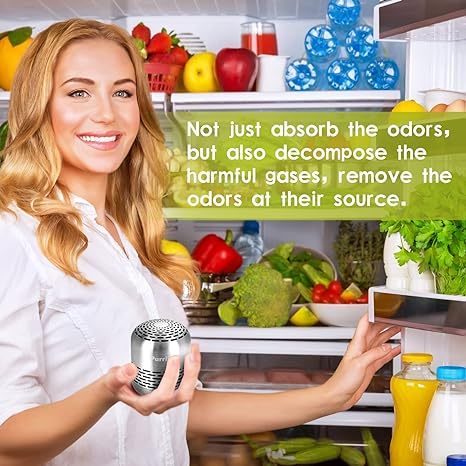
Highly Effective Refrigerator Deodorizer Review: Say Goodbye to Fridge Odors!
Check Out Now:
Rating: 4.5 out of 5 stars
As a diligent homemaker, I’m always on the lookout for products that simplify my kitchen maintenance routine. The Refrigerator Deodorizer has been a game-changer in my household, effortlessly tackling stubborn odors and keeping my fridge smelling fresh for up to 10 years!
Firstly, let’s talk about effectiveness. This little powerhouse of a deodorizer lives up to its promises. No more unpleasant smells lingering in my refrigerator! Whether it’s the remnants of last night’s seafood dinner or the forgotten leftovers, this deodorizer swiftly eliminates odors, leaving behind a clean and refreshing scent.
What sets this deodorizer apart from other solutions like baking soda and bamboo air purifying bags is its longevity. With a lifespan of 10 years, it offers unmatched value for money. Gone are the days of constantly replacing deodorizing agents or worrying about their effectiveness wearing off.
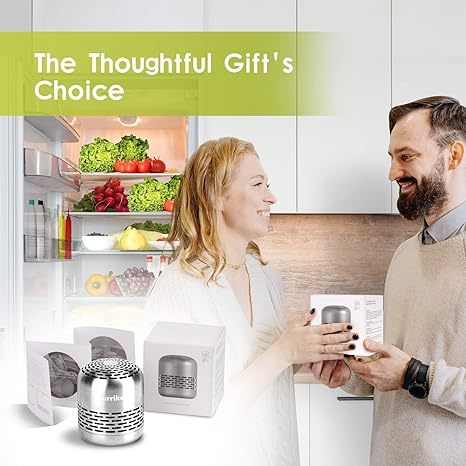
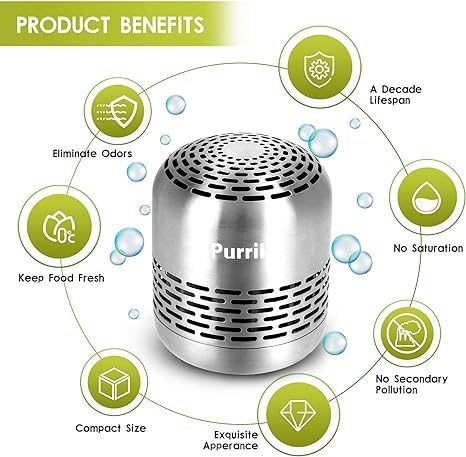
Buy Mow 11% Off
Click Here:
Related Items:
#Refrigerator Deodorizer#Lasts for 10 Years#Refrigerator Odor Eliminator#Fridge Deodorizer#Long-lasting deodorizer#Odor control for fridge#Eliminates refrigerator odors#Effective fridge odor remover#Superior to baking soda#Outperforms bamboo air purifying bags#Extended odor protection#Sustainable deodorizing solution#Eco-friendly fridge freshener#Long-term odor control#Advanced odor elimination technology#Permanent fridge odor solution#Low-maintenance refrigerator deodorizer#Powerful odor-absorbing properties#Convenient fridge odor neutralizer#Odor-free refrigerator solution#sales
2 notes
·
View notes
Text
Electrolux Group Wins 11 iF Awards for Outstanding Product Design
Electrolux Group has won 11 coveted iF Design Awards for products designed to improve the daily lives of consumers in the home. The iF Design Awards jury recognized Electrolux Group for many aspects of design, including user interface. The iF Design Award is one of the most prominent design prizes in the world. This year, the competition received around 11,000 entries from 100 countries. The…
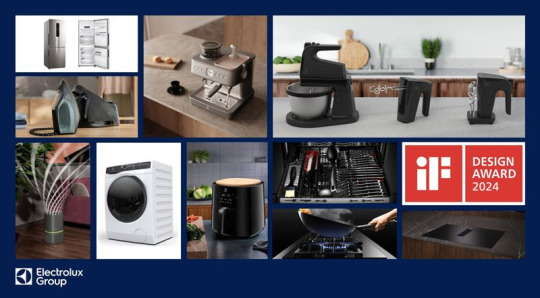
View On WordPress
#2023 Winners#AEG 7000 Series#AEG Appliances#AEG XTM Combo#Air Care#Air Fryer Range#AutoSense#Award-Winning Appliances#Bottom Freezer#Built-in Extractor#Care Products#Coffee Grinder#ComfortLift Dishwasher#Consumer Electronics#David Bentham#Design Awards#Design Recognition#Dish Care#Eco-Friendly#Electrolux#Electrolux 2023#Electrolux Innovation#Electrolux Sustainability#Espresso Machine#European Design#Experience Refrigerators#Fabric Care#Food Preparation#Food Preservation#Four-Stage Filter
2 notes
·
View notes
Text
Unveiling the French Door Refrigerator: A Stylish and Spacious Kitchen Ally
The refrigerator – a cornerstone of any kitchen, silently keeping our food fresh and meals delicious. But navigating the vast array of options can leave you feeling like you're lost in a maze of stainless steel and freezer drawers. If you crave both spaciousness and style, then French door refrigerators might be the perfect beacon guiding you towards kitchen bliss.
French Door Design: A Gateway to Functionality and Style
French door refrigerators ditch the traditional single top-mounted door for a sophisticated duo of swinging doors. This ingenious design unlocks a treasure trove of advantages:
Effortless Accessibility: Imagine a world where rummaging for that forgotten container of leftovers is a breeze. With both doors opening simultaneously, you have a panoramic view of the entire fridge. Reaching items tucked away in the back becomes a thing of the past, especially for those who find themselves strategically placing groceries based on height.
Space Optimization: Gone are the days of playing a precarious game of Tetris with overflowing grocery bags. The ingenious side-by-side door configuration minimizes wasted space compared to a single bulky door swinging open. This thoughtful design allows you to maximize your fridge's storage potential.
A Touch of Elegance: French door refrigerators come adorned in a variety of finishes, from the ever-popular stainless steel to timeless black or even bold pops of color. They seamlessly blend functionality with aesthetics, adding a touch of sophistication to your kitchen.
French Doors: Are They the Undisputed Champions?
While French door refrigerators offer a compelling package, it's important to remember there's no single "best" choice for everyone. Here are some factors to consider before welcoming these stylish giants into your kitchen:
Size Matters: French door refrigerators tend to have a larger footprint compared to traditional top-freezer models. Carefully measure your kitchen space to ensure your dream fridge doesn't turn into a space-consuming nightmare.
Budgeting for Beauty: Generally, French door refrigerators come with a steeper price tag than their top-freezer counterparts. Be sure to factor in the cost before falling head-over-heels for their sleek design.
Understanding Your Storage Needs: Do you stock up on towering cartons of juice or gallon jugs of milk? If so, you might find the bottom freezer layout in French door models less convenient. Consider your typical grocery haul to ensure the storage configuration aligns with your needs.
Finding Your Perfect French Door Match
Once you've decided that a French door refrigerator is the key to unlocking kitchen nirvana, delve deeper into the world of features:
Capacity is King (or Queen): Choose a size that caters to your needs and kitchen layout. Don't get swept away by the allure of a massive unit if it dwarfs your kitchen and leaves you with an echoing emptiness.
Feature Frenzy: French door refrigerators come loaded with an array of features to elevate your culinary experience. Explore options like adjustable shelves for flexible storage, built-in water dispensers for instant refreshment, and automatic ice makers for effortless entertaining.
Energy Efficiency Matters: Look for Energy Star certified models. While the initial cost might be slightly higher, the long-term savings on your electricity bills will make your wallet and the environment happy.
The Final Verdict: A Symphony of Functionality and Style
French door refrigerators beautifully combine functionality and style, offering spacious interiors, effortless access, and a touch of elegance to your kitchen. By carefully considering your needs, budget, and storage requirements, you can find the perfect French door refrigerator to keep your food fresh, your kitchen organized, and your heart content. Remember, the "best" refrigerator isn't a one-size-fits-all solution, but rather the one that perfectly complements your lifestyle and kitchen. So, embark on your journey to find your ideal French door companion, and get ready to experience a whole new level of culinary convenience and sophisticated style in your kitchen.
#Eco Friendly Refrigerators#Energy Efficient refrigerators#french door fridge#french door refrigerators#refrigerator for shop#fridge for sale#bottom freezer refrigerator#fridge price below 10000#fridge shop near me#Fridge under 12000#fridge with freezer#fridge with screen#glass door fridge#glass door refrigerator#glass refrigerator#Home Fridge#ice cream fridge#Inverter Compressor Refrigerators#refrigerator with glass door#best refrigerator under 15000#kitchen refrigerator#buy fridge online#luxury refrigerator#Mini bar refrigerators#mini fridge#mini refrigerator#buy refrigerator online#buy fridge#organized fridge#inverter fridge
1 note
·
View note
Text
Freezer Hacks: Slash Bills with ‘Water Bag’ Trick!
Energy bills can be a source of concern for many households, especially as winter approaches and heating becomes a necessity. With shorter days and longer nights, we find ourselves using lights more often, and the gloomy weather may keep us indoors, increasing our energy consumption and causing our bills to soar.

For more visit: financeprozone.com -
#Eco-Friendly Living#Efficient Freezing#Energy Efficiency#Energy Savings#Food Preservation#Freezer Hacks#Frozen Food#Home Appliances#Household Hacks#Kitchen Efficiency#Money-Saving Tips#Refrigeration Tips#Utility Bills#Water Bag Trick
0 notes
Text
Ace Attorney Headcanons - Holiday Gift-Wrapping 🎄🎁🎄🎁
🎁 Phoenix likes to keep his holiday gift-wrapping simple - he buys a case of “grape juice” and wraps the bottles in the fanciest gift bags he can find at Dollar Tree. Done and done.
🎁 Miles does not enjoy gift-wrapping, or paper-folding of any kind, actually (due to the origami-crane incident), so he gets all his presents done at the charity gift-wrapping booth in the mall, and he always donates generously.
🎁 Franziska, on the other hand, adores gift-wrapping. She refuses to entrust her packages to the mall employees - “If you want something done perfectly, do it yourself,” she says. She takes pride in her color coordinations; the ribbons and bows must complement the paper exactly. If the department store runs out of her favorite tissue paper, Franzy will call the manager to complain.
🎁 Larry - OK, so this one time, years ago, when Larry was working for KB Security, he was assigned to guard a Tiffany store. Somehow, Larry managed to “acquire” a small stash of blue Tiffany gift bags without anyone noticing. Now, whenever he buys his latest girlfriend a present, he always puts it in a Tiffany bag to impress her.
🎁 Gumshoe likes cloth gift-wrap: reusable, eco-friendly, and most importantly, easy on the budget. He’ll bake a batch of homemade sugar cookies and wrap the cookie box in a big red and green tea towel, knotted at the top, Japanese-style.
🎁 Klavier has his own Gavinners wrapping paper: purple with silver G’s, of course. He won’t wrap gifts himself, though; he saves his hands for guitar-playing and doesn’t want to get any paper cuts. So he asks one of the junior clerks at the prosecutor’s office to help him.
🎁 Ema works long hours in the forensics lab, and she doesn’t really have time to shop for gifts, let alone wrap them. So she orders gifts from Amazon on her work computer, during her snack break, and she checks the “Gift Wrap” box on every single item - boom, boom, boom, done! “Work smarter, not harder,” says Ema as she goes back to munching her Snackoos.
🎁 Maya lovvvves gift-wrapping, and so does Pearl. It’s one of their favorite activities to do together for the holidays. Maya wraps all her presents in plain white paper and then she and Pearl have fun decorating the parcels with ribbons, stickers, stamps, and markers.
🎁 Trucy is a bit of a prankster when it comes to gift-wrapping. The first Christmas that Apollo was at the Agency, Trucy did the whole “box inside a box inside a box” thing for Apollo’s gift. So poor Polly had to spend like 15 minutes unwrapping a refrigerator-sized cardboard box with about seven or eight more boxes nested inside, weighted down with rocks and bricks, while Trucy looked on with devilish glee. Finally, Polly opened the last box, and inside it was … an expired coupon for Eldoon’s. Naturally, he was furious! But before he could say anything, Trucy whipped out the Magic Panties (TM) and revealed his actual gift - TA-DA! (It was a Blu-ray box set of his favorite TV show, that Trucy had saved up her allowance to buy for him!) so Apollo couldn’t really stay mad at her after that.
#ace attorney#headcanons#phoenix wright#miles edgeworth#franziska von karma#larry butz#dick gumshoe#klavier gavin#ema skye#maya fey#pearl fey#trucy wright#apollo justice#happy holidays everyone!
68 notes
·
View notes
Text

zombie aftermath challenge - adjusted
i'm absolutely obsessed with all things zombie related, and i've always been dying to try the apocalypse challenge. it looks extremely fun, but i find the original challenge to be a little too hard for my play style, and the aftermath challenge a bit too short. so here's my version of it based off the original apocalypse challenge and this one from cannibalcupcake. the biggest change i've made is that there are much less restrictions. if it's not listed as a restriction, you can do it. my challenge is also a little different, because it gets slightly harder as you move on. there's also only 5 generations because there's really only so much you can do until you're just playing a regular legacy again. i would highly recommend playing with vector if you want actual zombies, along with this mod and this one if you want weapons to kill them. you may use any other violence/weapon mods if you wish. if not, you may use cheats to get around killing them or any sims. this is pretty long, so everything is included under the cut 🧟♂️

to start off with, any surviving sims and heirs must have at least one survival trait. if they get any non-survival trait, they must be killed off when they reach young adult. you may only choose the founder's traits, the rest of your sims have to be randomized. any other traits not listed are fine, i tried to go with what the original list had and my own personal opinions on what would work.
survival traits
-adventurous -angler -athletic -brave -daredevil -disciplined -eccentric -eco-friendly -family oriented (all sims who give birth must have this trait, if they do not, they must be killed off after giving birth. the children may survive) -gatherer -genius -green thumb -handy -kleptomaniac -light sleeper -lucky -natural cook -never nude -nurturing (they may also have this instead of family oriented, but same rules apply) -perceptive -technophobe -vegetarian
non-survival traits
-absent minded -brooding -clumsy -coward -hates the outdoors -heavy sleeper -insane -loser -neurotic -couch potato -hot-headed -over-emotional -unlucky -unstable

stage zero - infection
the world as we know it has fallen- no more electricity, no more jobs, no more people. there's zombies roaming around, after all. however, you managed to survive the end of the world, and now it's up to you to rebuild it.
to survive stage zero;
start off with two young adult sims, can have any traits but must have at least one survival trait. these will be the only sims whose traits you can choose, so pick wisely!
must live in a fenced in lot, if a sim leaves the lot for any reason besides an expedition or killing loitering zombies, they must be killed off
must grow your own food, there's no supermarket
must produce a surviving heir, have has many kids as you need to until you can do this. you also must try for a baby every time your sims want to woohoo
your sims may not have a job or be self-employed. money is obsolete now. you cannot sell anything in your inventory
you cannot interact with any sims outside of the family, they're all zombies!
cannot use any electricity. a stove and refrigerator are fine, they just have to be the cheapest one, you also cannot upgrade anything to unbreakable. you cannot repair or replace anything unless your sim is handy or has mastered the handiness skill. once it breaks, it's gone.
if you can justify something as battery powered, it is allowed, but if it breaks it cannot be fixed or replaced
may use plumbing, but no showers (yes, even the outdoor shower unless you don't like mods). sponge baths only. same rules as electricity
may go on expeditions outside the lot once a week, but once you have children only one sim may go outside until you get a teenager
this stage will be completed once your heir has aged up to a young adult.

stage one - lawless land
you and your family thought you had this survival thing down, until other survivors came pouring into town. now you have to defend yourself not just from the zombies, but from other people as well.
to survive stage one;
your heir must join the criminal career and until they are level 5, they must pay a $300 tax to the gangs every week
you may only marry and talk to other sims in the criminal career
you can only join the thief branch, your sim isn't the big bad guy
you can no longer use any plumbing or electrical items, the gangs have tainted the water and have completely shut off all power
can still go on weekly expeditions, but now you must roll a die on whether or not the sim will die. even for life, odd for death
you may also only leave during the night now, as the gangs patrol the streets
you can only have two children, but if neither survive you can try again. your sims must try for a baby every time they woohoo, so be careful, any extra children must be killed off
master the athletic skill
master the logic skill
reach the top of the criminal career
this stage will be completed once you have topped the criminal career and your heir has aged up to a young adult.

stage two - military power
you grew up knowing that all hope was lost and the past was in the past, until one day the military rolled into town and announced they were taking over. they've vowed to wipe out all the zombies across simlandia, but can you really trust them?
to survive stage two;
your heir must join the military career, and until they reach the top of the career they must pay a weekly $100 tax for each sim in the household (5 sims = $500)
you may only marry and talk to other sims in the military career
you may now use plumbing again, but only from 2PM-5PM
you can use electricity after reaching level 5 in the career, the military provides you with a generator. they must be the cheapest items
you can now use the cell phone again, but only for calls (treat it like a walkie-talkie or radio)
all food must be rationed, you can only keep 5 of each type of produce/meat. the rest must be 'donated' to the military (aka just throw it out, no selling!)
you can have as many kids as you want, but keep the taxes in mind. you can still only try for a baby when woohooing
you may now go on as many expeditions as you'd like at any time of day, but you still must role a die on your chances. even for life, odd for death
master the athletic skill
master the handiness skill
this stage will be completed once you have topped the military career and your heir has aged up to a young adult.

stage three - the cure
the military has announced that the only way to get rid of the zombies is to set off bombs. but this means you and your family could die, and all that they've worked for will be destroyed. it's up to you to save simanity.
your heir must join either the medical or science careers, but these are no longer jobs- you are a volunteer and money earned must be given back to the career of your choice. you can save $50 each payday
every promotion you get you must roll a die to decide if you lived or died while attempting to create the cure. even for life, odd for death. after 3 successful attempts, the cure has been made
you can now marry and talk to sims outside of your career, but no one from the military
plumbing is now unrestricted
electricity is now unrestricted, but you can still only use the cheapest items
sims no longer need family orientated/nurturing to give birth now that the hospital has been set up. you also no longer have to try for a baby every time they want to woohoo
food is no longer rationed, but you don't trust the meat the military provides. your family must be vegetarian (does not need the trait)
have as many children as you can, you're trying to repopulate and also make sure someone else can take over for you in case you fail at creating the vaccine
master gardening skill
master handiness skill
this stage will be completed once you have successfully created the cure and your heir has aged up to a young adult.

stage four - survival of the fittest
your parent's cure has been spread around the world, and the zombies have been wiped out. the world is ready to return to normal, but what is normal? you were born into a world of survival, you don't know anything else.
your heir may now join any self-employed career
your sims will no longer need to be killed off for having a non-survival trait, but they must be kicked out at young adulthood
all plumbing and electricity has been fixed and you can now afford nicer things- but do you really want them at this point?
your sim must live off the land, no buying things from stores, you don't trust anything from outside your own garden or what you've caught yourself
you can leave the lot whenever you want and no longer need to worry about rolling a die- it's safe outside!
do not get married
master gardening, inventing, and fishing
reach level 5 in 3 other skills of your choice
raise a spoiled child, they don't have to worry about their life anymore, so they're nothing like you. do not have a close relationship with your children
as an elder, move to a city to see what the new world has become. it's up to you what to do next
this stage will be completed once your heir dies.

and then that's it! you're welcome to continue the legacy past this however you'd like, but that's where i'm going to end it at. if you try this challenge you can @ me, i'd love to see it 💚 any feedback is much appreciated
#ts3#sims 3 challenge#ts3 challenge#zombie aftermath challenge#zombie apocalypse challenge#i made this more for myself but my friend inspired me so i decided to share it :3c
127 notes
·
View notes
Text
SiliNOT! Testing and Review
Since I run a lot of casting workshops, I've had several people in the costuming/maker community ask me my opinion on SiliNOT!, a relatively new product advertised as a budget- and eco-friendly moldmaking alternative to silicone, urethane, and other single-use materials.
I finally bought a couple of bottles to play with, so I did a test project. My experience and findings are below! (It's not a recipe blog, but if you want to skip the play-by-play and get to the TL;DR, it's under the big "In Summary" header near the bottom.)
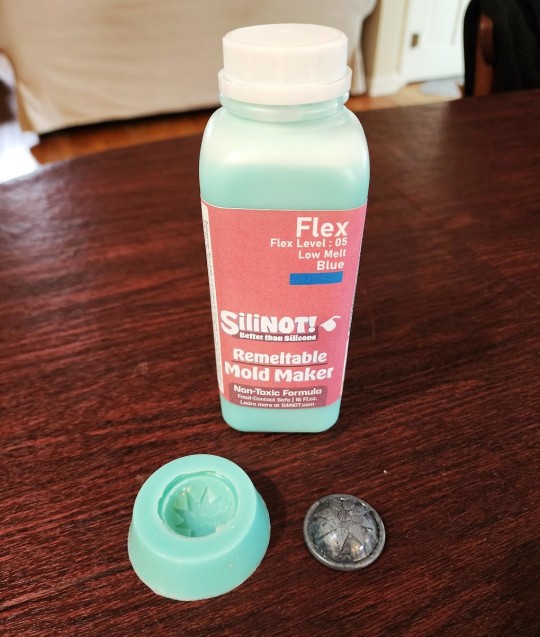
First, if you aren't familiar with this material, SiliNOT! is a remeltable, reusable medium for making molds. Though its exact ingredients are not disclosed, it purports to nontoxic, food-safe, and compostable. It melts in a household microwave or double boiler and solidifies at room temperature (or in a refrigerator/freezer for faster results). The website is https://silinot.com/.
(I am not an affiliate, and have no connection to this company apart from having made one retail purchase from them. I just have a lot of casting experience and like trying out new products.)
The Positive Original
I’m still in the middle of a Vincent Valentine build, so I decided to test the SiliNOT! on his custom buttons. My original is a stack of various nonporous materials: an antique (probably Bakelite) coat button, an epoxy resin dome I cast using a mold I already had in my library, and some engraved Worbla’s Pearly Art for the raised detail. The button shanks won’t be added until the final casting, so the original can be mounted flat for the moldmaking process.
Sample Worbla on the left; completed button stack on the right:
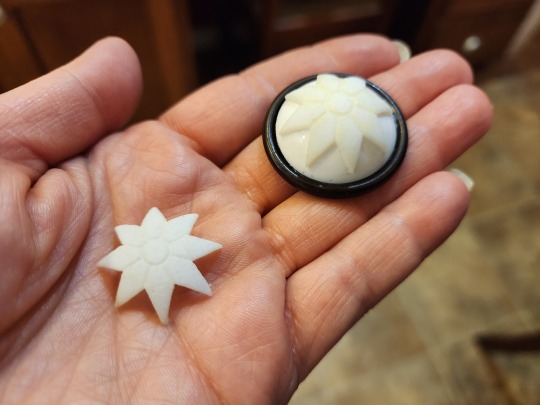
The Mold
I built the mold container the same way I do for silicone pours, with the flat back of the button fixed to a styrene plate and a cylinder (actually a small paper cup with the bottom cut off) surrounding it for the walls. The lip of the cup is sealed all the way around with Monster Clay to prevent leaks.
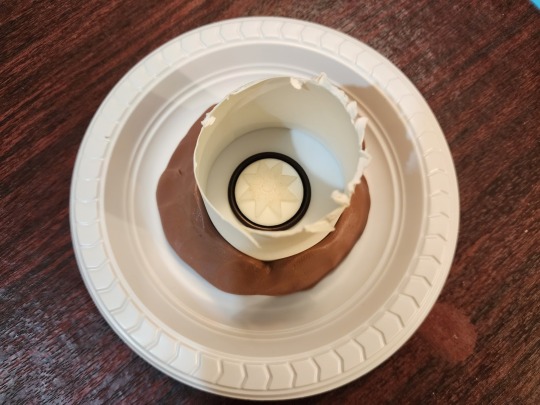
Heating and Pouring
The SiliNOT! didn’t take long at all to heat up; I did maybe four or five 20-second bursts before it was completely fluid. The bottle does get rather warm, so hand protection isn’t a bad idea. If you have heat-resistant gloves, you can use those; I was working in my kitchen (yay for nontoxic stuff!), so I just grabbed an oven mitt with a silicone grip.
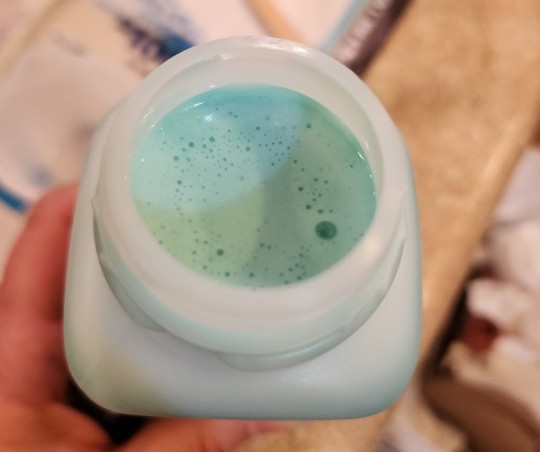
The melted SiliNOT! looks a bit like Luke Skywalker’s blue milk. It’s about the consistency of a yogurt smoothie and likes to pour in a thicker stream compared to silicone. While silicone can be stretched into a thin ribbon for delicate pours or chemically thinned with solvent for really tricky jobs, SiliNOT!'s viscosity is dependent on temperature and never seems to get quite as thin as silicone.
I’d automatically made my mold compact to conserve material (not really a concern with a reusable moldmaking material like SiliNOT!, but after using silicone for more than a decade, I’ve trained myself to be as efficient as possible), so the walls of my mold container were only about half or three quarters of an inch from my object. Because the target was so narrow, I found it difficult to accurately fill from the lowest area of the mold with the SiliNOT! The heavier pour also means more air can get trapped in or under the material.
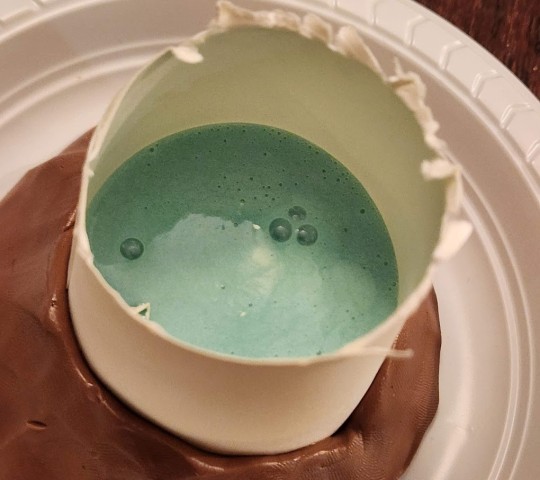
Bubbles are one of the areas in which SiliNOT! is decidedly inferior to silicone. SiliNOT! has higher viscosity, so bubbles don’t want to rise to the surface without vigorous tapping, which can distort the mold edges or affect leveling depending on your mold container. The bubbles that do make their way to the surface are difficult to pop, even when poked with a sharp implement. Heat gun degassing doesn’t have much effect.
Since the bubble surface cools and skins over quickly, I actually had to use a tool and scoop some large bubbles completely out of the mold to allow the surface to level. Critically, the SiliNOT! is opaque, so you can’t spot bubbles clinging to the surface of your original. (This is why my first mold was a reject, and I had to repour. More on that below.)
Hardening
Once the surface had set, I carefully moved the mold into the refrigerator to cool faster. Here’s another area where some types of silicone can have an advantage: I typically use fast-curing Smooth-On products (because I always have random quantities left to use up after our casting workshops), so I rarely have to wait more than half an hour for a silicone mold to cure, regardless of its size or mass.
The SiliNOT! has to chill completely before handling, though, and discharging that amount of heat requires a fair amount of time even in a cool environment. My mold was pretty small, maybe 2 1/2” wide by 1” deep, and it still took around 40 minutes to cool completely. A larger, deeper mold could hold considerably more energy in the center, and might have to be left in the freezer for a couple of hours before use.
Demolding the Original
When the mold was completely chilled, I removed it from the refrigerator and popped it off the plastic plate I’d used for the base of the mold. The texture was very different from what I’d expected: Unlike other meltable materials (Monster Clay, et al.) that have a firm surface when cool, the SiliNOT! remains tacky, which means it promptly collects any debris that crosses its path. In my case, this meant I had to pick dog hair off the surface throughout the casting process (and I don’t want to think about what would happen if glitter had contaminated the work space).

I’d used a paper cup for my mold walls, which usually works fine with fast-curing silicone. But the SiliNOT! must have a high oil content, because the cup absorbed some of it:
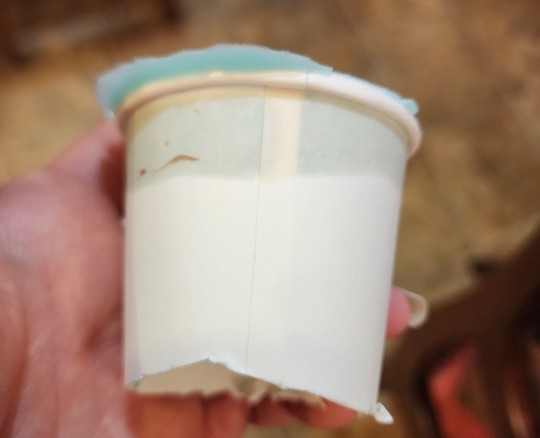
Lesson learned; use only nonporous containers with this stuff.
The SiliNOT!! really wanted to cling to the edges of my original, so I had to go slow at first to avoid tearing the thin flanges of the mold off. However, it did demold nicely from the smooth surfaces, and preserved texture very well. You can see the Worbla pebbling and the engraving channels clearly in the mold (as well as some dust and dog hair, because I made the mistake of setting it down briefly):
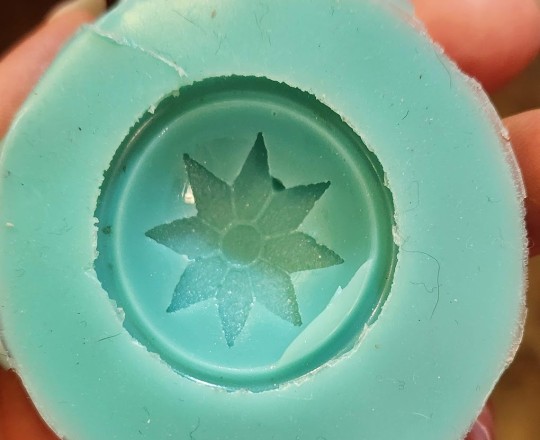
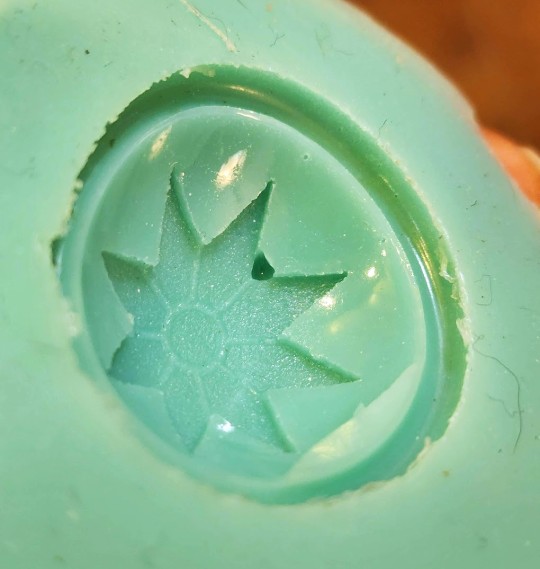
Unfortunately, as you can see, a large bubble had stuck to my original and created a pit in the mold, so I decided to do a second mold pour. I figured I’d tear up the failed mold and put the pieces back in the bottle to remelt… and discovered I couldn’t. The mold would stretch and twist, but not tear. It also seemed to return to its original shape relatively faithfully. Here’s a video of me manhandling the mold:
As you can see, the SiliNOT! has much better stretch and recovery than many silicone products (there are silicones that stretch well -- some of the Dragon Skin products come to mind -- but they’re not typically marketed for moldmaking). This means it’s likely well suited to casting objects with moderate undercuts or oddly-shaped bits that need the mold to stretch during demolding.
You can cut the SiliNOT! easily with scissors, which is the recommended method for getting it back in the bottle when you’re ready to remelt.
Take Two
Using what I’d learned from the first pour, I did the second one inside a hard plastic ramekin. This gave me a bit more room to pour into the floor of the mold, reducing the bubble risk, and also eliminated the porous paper cup that had absorbed oil. I still had the issue with bubbles that didn’t want to pop, but there were fewer of them this time.

The ramekin made for a much cleaner mold, buuuuut there was ANOTHER BUBBLE right in the middle of the design. >.<
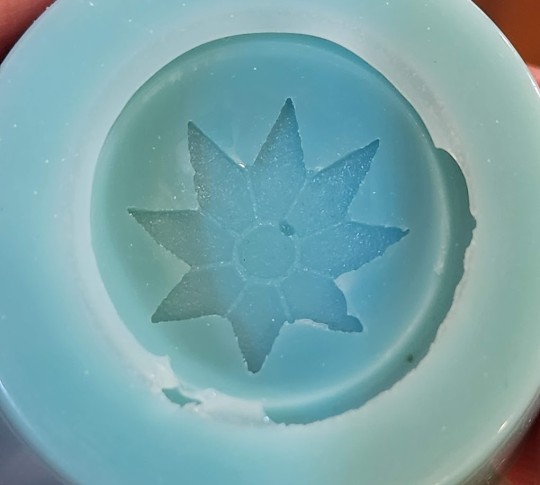
Take Three
Lather, rinse, repeat. Or in this case, melt, pour, chill.
This time I heated the SiliNOT! as much as I dared and did the absolute slowest, narrowest pour I could manage, giving the air extra time to escape as the mold was filled from the bottom. The risk with stringing out the pour like this is that in a thinner stream, the heat escapes faster, leading to uneven viscosity as the liquid fills the mold. I don’t think that’s a major problem for this particular piece, but it’s something to pay attention to as regards leveling and degassing, especially for larger molds that will take longer to fill.
The result of pour three:
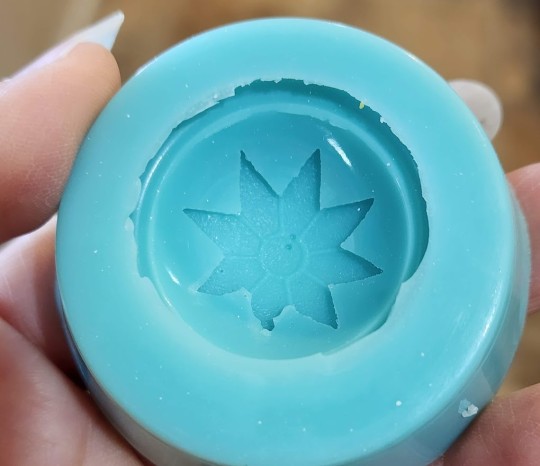
/siiiiigh/ Well, at least the bubbles are smaller, this time. They may not show up enough to matter in the final cast. I’ll give it a try.
Casting
I had leftover workshop resin that was getting on toward the end of its shelf life, so I used Smooth-On Smooth-Cast 300 for my initial resin trial. It’s an opaque white resin with about a 10-minute cure time (the fast turnaround is why we use it for workshops).
Before pouring, I had to do a little mold cleanup where the SiliNOT! had managed to sneak under the edge of the Worbla (I think I’d loosened the corner of the star from prying it out of so many molds), but since the SiliNOT! stretches so well, it was pretty easy to invert it to get little scissors down into the bottom of the depression.
For the first cast, I didn’t use anything but the resin in order to get a baseline. Ideally I’d like to cold cast or dye the resin so I don’t have to worry about paint chipping, but since I’m doing a trial here (and need multiple buttons anyway) I figured some plain white extras wouldn’t hurt.
So, my first cast…

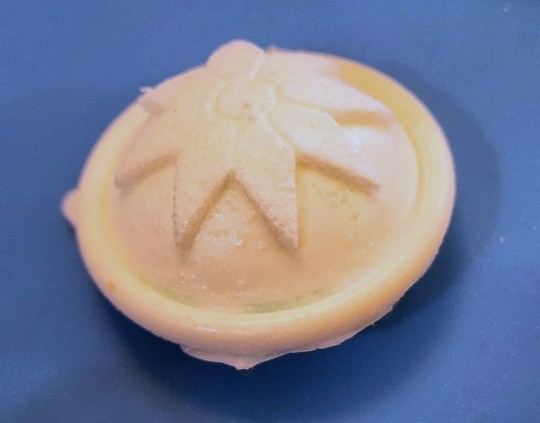
…smacked into a big problem, which I probably should have seen coming: The resin I’m using is a fast cure formula, which means it discharges a fair amount of heat as it's going through that rapid chemical reaction -- enough heat to melt the SiliNOT!, as it turned out. When I tried to demold it (after giving it a few extra minutes beyond label time to be sure it was done), the surface of the mold had melted to the resin and even embedded itself in a few places. It’s difficult to see the resin detail in the photos (my camera went into white balance panic mode with all the shades of white and blue), but you can see how pitted the formerly-smooth mold surface is.
In fairness to the SiliNOT!, the bottle does say that you should put the mold in the freezer for half an hour before casting high-temperature materials. But I assumed high-temperature material was something like candle wax or melted chocolate, rather than ordinary resin. (And the mold had just come out of the refrigerator.)
So, on to pour FOUR of the SiliNOT! mold…
Take Four
NGL, this is getting a little old. >.<
Fourth mold definitely needed some cleanup around the edges, and there are still a couple of tiny bubbles I can’t seem to get rid of, but it’s good enough for a test. (I’m starting to despair of using these for actual production, given how many times I’ve had to redo the molds because of bubbles...)

Deep in the recesses of my basement, I found some transparent epoxy resin with a 24-hour cure time -- much slower and lower-temperature than the Smooth-Cast. Since it cures clear, I went ahead and mixed in some metallic powder pigment on the off chance that I get a usable button out of this one. I had excess resin after mixing, so I poured that into my first mold, which has a bubble in the design but is otherwise fine. Two test pieces are better than one, right?
Results
Here are the results of the slow-curing resin out of mold #4:
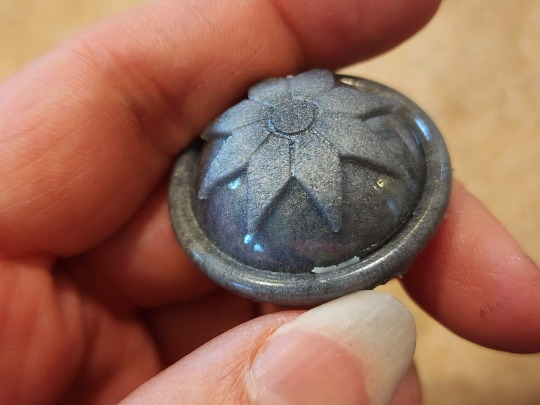
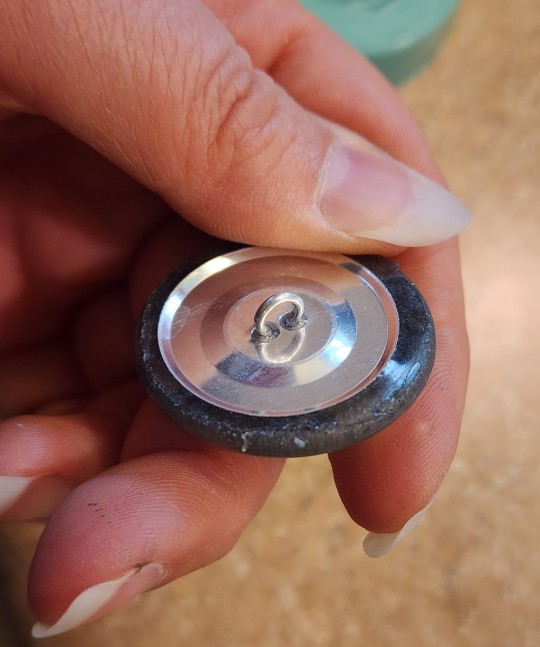
Finally, a (mostly) clean cast!
As you can see, the detail reproduction is excellent -- certainly on par with the pulls from the silicone mold I ended up making while waiting on this set to cure (purely for time reasons; I couldn’t afford five days to cast the buttons using slow-curing resin, and with a silicone mold and fast-curing resin I could get them all done within a couple of hours).
However, you can also see a few spots where bits of the SiliNOT! embedded themselves in the final cast. Part of that may be due to design flaw in the original; I didn’t want to glue anything permanently to the antique button, and that resulted in a tiny gap between the button and the resin hemisphere. Silicone has enough strength to resist tearing out in that kind of area, but apparently the SiliNOT! doesn’t. The bits of mold around the outer edge seem to have stuck just to be difficult, as there was no structural reason for those to have become embedded in the resin. This means the mold could be damaged by successive casts, reducing its usable life and accuracy.
Still, the mold definitely produced decent results for a first cast, and a different shape might not have had as much of a problem with tearing off mold parts. The slow-curing resin is a bit of a limitation, but not a unique one (I use this same epoxy resin for any glass-clear casts I do, and only use the Smooth-Cast 300 for opaque items or things I need very quickly). I don’t personally use UV resin, but I’d be curious to learn how it performs with the SiliNOT!
IN SUMMARY:
Here’s the TL;DR on SiliNOT!
Pros
Cost effectiveness. This is the most obvious advantage of SiliNOT! over silicone; it’s (theoretically) infinitely reusable, and even with natural attrition/inevitable contamination from use, you can likely get over a hundred pours out of a bottle. That's a lot cheaper per use than silicone.
Non-toxicity. SiliNOT! is touted as food contact-safe, so you don’t have to panic if you get it on your skin or kitchen counters. While platinum-cure silicone is also relatively harmless (some varieties are labeled for food or life casting), other common moldmaking materials such as tin-cure silicone or urethane are not. (NOTE: Since the company is very hush-hush about what actually makes up the SiliNOT! secret formula, I do not know if it might release any vapors or fumes that would be irritating or harmful to pet birds. In general, I advise not doing any kind of casting around birds.)
Eco-friendliness. This is the biggest draw for me personally: Given the number of casting workshops I run and all the things I sell commercially, I have constant guilt about the amount of waste I generate for creative projects. In most areas of life I’m an aggressive reduce/reuse/recycler and try to use organic materials instead of synthetics whenever possible, so a mold that’s reusable and compostable is very appealing.
Ease of use. It’s honestly pretty hard to mess this up -- just microwave according to the directions and pour. No measuring, no A/B mixture, no concerns about chemical contamination from latex or sulfur, etc.
Shelf life. Unlike silicones, which have a shelf life of anywhere from six months to three years depending on storage conditions, the SiliNOT! purports to be shelf-stable. It's compostable, so don’t bury it in your yard, but otherwise it appears that it could be kept on hand for years.
Cons
Bubbles. Honestly the most irritating thing about this stuff for me. I’m used to being able to see bubbles forming as I pour, tap them to the surface, and remove them. The fact that I poured four molds of the same object and never once got one without bubbles is super irritating.
Stickiness. I’m not a big fan of the tacky surface texture, and while I haven’t done any cold casting yet, I can imagine that it would be very difficult to clean out any pigment or mica powder that got where you didn’t want it. I probably wouldn’t use this for any kind of cold casting that required isolated colored areas or changing colors between casts.
Set time. The SiliNOT! may take longer to cool than a fast silicone would to cure when dealing with larger molds, so it’s not ideal for projects with a really tight turnaround. (But cosplayers would never be casting something the night before a con, right? We always plan ahead and never, ever procrastinate!)
Library life. The SiliNOT! may or may not structurally degrade over time the way urethane, latex, and tin cure silicones do, but I noticed even in my very limited casts that it was prone to having tiny bits of the mold (particularly at edges) stick and pull off. While I keep most of my platinum silicone molds for years and reuse them, I don’t feel that the SiliNOT! molds would hold up to repeated casting, and they’re far more sensitive to ambient temperature, so they’re probably best used for short term only. (I also wonder about the possibility of oil leaching out in long-term storage.)
Comparative Ranking
Ranking it against other mold-making materials, I’d place SiliNOT! below platinum-cure silicone in terms of performance, but maybe somewhere in the neighborhood of urethane and tin-cure silicone. It's definitely superior to latex. (Though to be honest, I'd rank Play-Doh above latex. I hate working with that stuff.)
Factoring in cost and environmental impact, it beats out urethane and tin-cure silicone. I'm still not sure if I'd rank it above platinum-cure silicone, though... Silicone costs much more and isn't eco-friendly, but the performance and lifespan is significantly better, so it still makes more sense for some projects.
Alginate is another type of material entirely, but in some ways SiliNOT! is comparable to it -- both are more cost-effective than silicone, both are biodegradable, both are skin safe, and both have long shelf lives. But SiliNOT! is easier to use for beginners than alginate, which has to be mixed to the right consistency and has an extremely short lifespan once poured.
Overall, I would recommend SiliNOT! for:
People who want accurate, non-shrinking molds but don’t have the budget for platinum-cure silicone
People who are committed to eliminating waste from single-use materials, and are willing to trade off a little performance for a more eco-friendly material
Projects with smooth surfaces and no indentations/sharp edges/undercuts where bubbles might stick (e.g. cabochons; simple geometric forms)
Projects where you need only one or two casts of something, rather than many casts from the same mold
Casting oddly-shaped pieces around which the mold needs to stretch in order to demold
Use with slow-curing resins that do not generate much heat
I would NOT recommend SiliNOT! for:
Extremely complex or detailed pieces, or pieces with a lot of surface texture that bubbles might stick to
Two-part molds
Projects requiring many identical casts out of the same mold
Molds that you intend to add to your library for future or repeat casting
Use with fast-curing resins, melted wax, melted Monster Clay, or any other material that emits heat
Cold casting with precise color application
My Overall Opinion
It's... okay? I will almost certainly keep SiliNOT! in my toolkit for certain specific applications. It's MUCH cheaper over the long term, I love the idea of recycling mold material, and there are some projects for which it will likely perform very well (those listed in the above bullet points). I will also admit that three days of working with it does not constitute a comprehensive familiarity with the product, and it might be the sort of thing that you get better at working with after more practice. (Just learning how to eliminate bubbles would go a long way toward making me adopt this for more projects!)
However, I don't quite buy the "better than silicone" tagline. It's definitely more difficult to get a perfect result, and there are some projects for which platinum-cure silicone is always going to be more reliable (e.g. high-temperature casting, mass production, large-scale life casting).
For those looking for a recommendation of whether or not to buy, I'd say look at your project budget and the applications for which you're going to be making molds, and let those factors guide which mold material you go with. People doing some kinds of projects are likely going to find this a godsend, while those doing different projects would probably hate working with it.
37 notes
·
View notes
Text
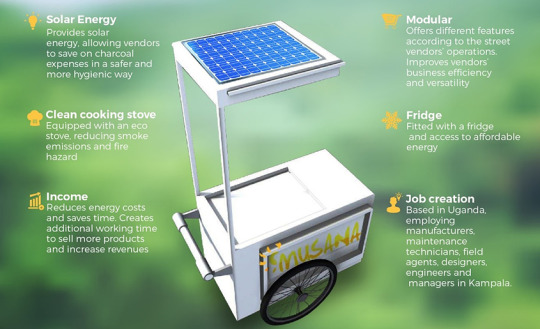
Musana Carts: Solar-powered business in Uganda opts for open source IP over patenting
Taking its name from a Ugandan word for ‘sunshine’, the Musana cart uses an in-built solar panel to power an eco-friendly stove and a small refrigerator. By removing the need for charcoal burning, the Musana cart produces far less smoke than other food vendor carts, ensuring a cleaner and safer experience for both workers and customers. Other innovations include light bulbs, to allow the vendor to work at night, and phone chargers, so that they can offer mobile money services.
The decision not to patent the Musana cart could have been seen by Nataliey and the team as a setback, but it instead encouraged them to return to their original vision and mission of social innovation: making the livelihoods of Africa’s street food vendors cleaner, safer and more sustainable.

They realized that the more people who had access to their cart designs, the better, and that patenting their invention could restrict access. On this basis, they decided to open source their IP so that vendors across Africa were free to improve their lives through their innovation. When IP is open source, it means that other people and groups can freely use, modify and share it.
After several years of selling to vendors, Musana Carts is already having a positive impact in Kampala. The solar-powered food carts have proved to be cleaner, more hygienic and more sustainable than traditional charcoal-fueled food carts. The Musana cart’s in-built lighting allows vendors to work at night if they choose, giving them an opportunity to earn more. Musana carts can be purchased in installments, making them more accessible to poor workers. The company has also teamed up with Kampala Capital City Authority to ensure that Musana carts are legally recognized, freeing vendors from the risks and uncertainties of working in the informal economy.
Although she sees the value in patent protection in more economically developed countries, where the legal framework is in place to ensure that an individual can be remunerated for the use of their innovation or invention, she knows first-hand that this is much harder to establish in African markets. Consequently, Nataliey encourages female inventors not only to monetize their innovations in their markets, but to share them outside of their capacity as well.
Equally importantly for Nataliey, however, is the philosophy behind open source IP. When there are so many challenges facing the world, she argues, no one individual or organization can satisfy every market need. She feels that there’s room for many to thrive. Furthermore, Nataliey believes that open sourcing can incentivize further innovation by allowing people to build on each other’s inventions. It’s the concept of cooperation, codependence and community at the heart of the African philosophy of ubuntu: ‘I am, because you are.’ Nataliey’s hope is that her company’s use of open source IP will help make this concept a reality for street food vendors across Africa.
A case study on open source innovation from the World Intellectual Property Organization (WIPO)
#solarpunk business models#solarpunk business#solarpunk#startup#africa#jua kali solarpunk#solar power#uganda#women#street vendors#informal economy
23 notes
·
View notes
Text

Researchers develop edible biofilm for extending fruit shelf life
With significant improvements in transportation technology, the accessibility of fresh food has considerably increased. However, this progress has been accompanied by escalating concerns about food waste during transportation and storage. Globally, around 17% of food at the retail and consumer levels is wasted, resulting in issues like groundwater contamination, hazardous gas emissions, and the spread of infectious pathogens, all contributing to environmental pollution. In a bid to develop efficient, cost-effective, and eco-friendly food preservation technologies, researchers across the world are studying alternatives for the development of packaging materials. Among these, edible coatings made of naturally occurring polymers have shown particular promise. These protective coatings can protect fruits from post-harvest degradation by preventing water loss and gas exchange, reducing the need for refrigeration or synthetic preservation, while extending shelf life.
Read more.
8 notes
·
View notes
Text
Buying and Using Coconut Butter in Bulk in India

Coconut butter, a creamy and versatile product made from pureed coconut flesh, has been gaining traction worldwide for its rich flavor and nutritional benefits. In India, where coconuts are a staple in many households, buying coconut butter in bulk is an economical and practical choice for both individuals and businesses. Here’s a detailed guide on why and how to embrace coconut butter in bulk, along with tips for sourcing it in India.
Why Buy Coconut Butter in Bulk?
Cost-Effective: Purchasing coconut butter in large quantities often reduces the cost per unit, making it a budget-friendly option for frequent users.
Eco-Friendly: Buying in bulk minimizes packaging waste, aligning with sustainable and environmentally-conscious practices.
Versatility: Coconut butter can be used in numerous ways—from cooking and baking to skincare and DIY projects—making it a multipurpose investment.
Convenience: Having a ready supply of coconut butter ensures you’re always stocked for your culinary and cosmetic needs.
Culinary Uses of Coconut Butter
Cooking: Use coconut butter as a flavorful substitute for dairy butter or oil in sautéing vegetables, making curries, or drizzling over roasted vegetables.
Baking: Its creamy texture adds richness to cakes, cookies, and energy bars, while its natural sweetness enhances flavor profiles.
Spreads and Toppings: Spread it over toast, pancakes, or waffles for a nutrient-rich alternative to regular spreads.
Smoothies: Add a spoonful to smoothies for a creamy texture and a boost of healthy fats.
Non-Culinary Uses of Coconut Butter
Skincare: Coconut butter’s moisturizing properties make it ideal for use as a natural lotion or lip balm.
Hair Care: It can be used as a nourishing hair mask to combat dryness and add shine.
DIY Products: Coconut butter is a popular ingredient in homemade soaps, scrubs, and candles.
Sourcing Coconut Butter in Bulk in India
Local Manufacturers: Many local producers, especially in coconut-rich states like Kerala and Tamil Nadu, offer high-quality coconut butter at wholesale prices.
Online Retailers: Platforms like Amazon India, Flipkart, and specialized health food websites often list bulk packages of coconut butter.
Wholesale Markets: Visit local wholesale markets or health food stores that cater to bulk buyers. These often provide fresh products at competitive rates.
Organic Stores: Organic outlets and co-operatives frequently stock coconut butter made from organically grown coconuts.
What to Look for When Buying in Bulk
Purity: Ensure the product is free from additives, preservatives, or artificial flavors.
Quality Certification: Look for certifications such as FSSAI, USDA Organic, or India Organic to guarantee quality.
Packaging: Opt for airtight, food-grade containers to maintain freshness and prevent contamination.
Shelf Life: Check the expiration date and storage recommendations to ensure long-term usability.
Storing Bulk Coconut Butter
Cool and Dry Place: Store coconut butter in a cool, dry place away from direct sunlight to prevent spoilage.
Refrigeration: In hot and humid climates, refrigeration can help extend its shelf life.
Airtight Containers: Transfer large quantities into smaller, airtight jars for daily use to minimize exposure and maintain freshness.
Embracing Coconut Butter as a Lifestyle Staple
Incorporating coconut butter into your daily routine—whether for its culinary delights or its skincare benefits—can be a game-changer. Buying in bulk not only saves money but also ensures you always have this versatile, nutrient-rich product at your fingertips.
Natures Natural India, where the coconut is revered as a ‘tree of life,’ coconut butter represents a natural treasure that supports health, sustainability, and tradition. By sourcing it wisely and using it creatively, you can unlock its full potential for yourself and your family.
2 notes
·
View notes
Text
Eco-Friendly PVC Curtains: Reducing Your Carbon Footprint

In today’s world, businesses are increasingly looking for ways to reduce their environmental impact and operate more sustainably. One often overlooked yet effective solution is the use of eco-friendly PVC curtains. Modern PVC curtains, especially those made from recyclable materials, can play a crucial role in reducing waste and lowering the carbon footprint of businesses. From cold storage facilities to industrial workshops, these versatile curtains are helping businesses maintain energy efficiency and reduce their environmental impact without compromising on quality or functionality.
The Role of PVC Curtains in Environmental Sustainability
PVC curtains are traditionally made from Polyvinyl Chloride, a durable plastic material known for its flexibility, resilience, and long lifespan. However, concerns about the environmental impact of plastic have led manufacturers to explore more sustainable options.
Modern eco-friendly PVC curtains are now being produced from recyclable materials. By using recycled PVC, manufacturers can reduce the demand for new raw materials and lower the amount of waste that ends up in landfills. This approach not only helps in minimising the environmental impact of the production process but also provides businesses with a sustainable alternative to traditional plastic products.
Recyclable Materials: A Step Towards a Greener Future
Eco-friendly PVC curtains are designed with recyclability in mind. At the end of their life cycle, these curtains can be recycled and repurposed into new products, helping to create a circular economy where materials are reused rather than discarded. This helps businesses minimise their waste output and contributes to global efforts to reduce plastic pollution.
In addition, the production of recyclable PVC curtains typically uses less energy compared to manufacturing new PVC from raw materials, which helps to lower greenhouse gas emissions. By opting for these eco-friendly alternatives, businesses can significantly reduce their carbon footprint while still benefiting from the durability and functionality that PVC curtains offer.
Energy Efficiency and Carbon Reduction
One of the most significant ways that PVC curtains help businesses reduce their environmental impact is through energy efficiency. In cold storage units, for example, these curtains prevent the exchange of warm and cold air, reducing the need for constant refrigeration and helping to lower energy consumption. This energy-saving benefit translates to lower greenhouse gas emissions, as less energy is needed to keep facilities at the desired temperature.
Similarly, in manufacturing plants, warehouses, and other industrial settings, PVC curtains can help to maintain specific environmental conditions without requiring heavy-duty air conditioning or heating systems. By creating barriers that regulate temperature, they reduce the workload on HVAC systems, further contributing to energy efficiency and lower carbon emissions.
About Rayflex Group
When it comes to eco-friendly PVC curtains in the UK, Rayflex Group stands out as a leading supplier. This company has been at the forefront of providing high-quality PVC strip curtains and welding screens for a wide range of industries. Whether it’s for use in welding workshops, schools, nurseries, manufacturing plants, or chillers, Rayflex offers sustainable solutions that cater to the specific needs of each business.
Rayflex Group is committed to supplying products that not only improve operational efficiency but also contribute to environmental sustainability. Their PVC strip curtains are designed to last, ensuring businesses get long-term value while minimising the need for frequent replacements, further reducing waste.
Customer Reviews
Here are some testimonials from business owners across various industries in the UK who have invested in eco-friendly PVC strip curtains from Rayflex and benefited from them:
"We installed eco-friendly PVC strip curtains from Rayflex in our warehouse, and they’ve made a huge difference. Not only are we saving on energy costs, but we’re also reducing our carbon footprint. It feels good to know we’re doing our part for the environment." – Tom, Warehouse Manager, Birmingham.
"As a nursery, we’re always looking for ways to be more sustainable. The PVC curtains we got from Rayflex are perfect for separating areas in a safe, eco-friendly way. They’re easy to maintain, and it’s reassuring to know they can be recycled at the end of their life." – Sarah, Nursery Owner, London.
"Rayflex’s PVC curtains have been a fantastic addition to our manufacturing plant. We needed something that could handle the tough environment while helping us reduce our energy consumption. These curtains have exceeded expectations, and the fact they’re made from recyclable materials is a huge plus." – James, Operations Manager, Manchester.
"Our school installed PVC strip curtains in the kitchen and other areas where temperature control is important. We were pleasantly surprised by how much they help with energy efficiency. It’s great to know we’re reducing waste with a product that’s recyclable." – Emma, School Facilities Manager, Leeds.
"I’ve been using PVC curtains from Rayflex in my welding workshop for over a year now, and they’ve been brilliant. They block out the welding sparks and help with noise reduction. What’s even better is knowing they’re an environmentally-friendly choice, which aligns with our company’s values." – Mark, Workshop Owner, Sheffield.
Conclusion
Eco-friendly PVC curtains are proving to be a valuable asset for businesses looking to reduce their environmental impact. By investing in PVC curtains made from recyclable materials, companies can lower their waste output, reduce energy consumption, and contribute to a more sustainable future. Whether it’s for cold storage, manufacturing plants, schools, or nurseries, the benefits of these curtains extend beyond just practical functionality—they also represent a commitment to environmental responsibility.
If you’re a business looking to improve your sustainability practices, investing in eco-friendly PVC curtains could be an excellent step towards reducing your carbon footprint and contributing to a greener planet.
Further Reading: https://blindsidedblogger.tumblr.com/
#blackout blinds#blinds installation#curtains and blinds#motorized blinds#pvc blinds#blinds solutions#custom blinds#blinds#behind the blinds#roller blinds
4 notes
·
View notes
Text
Revolutionizing Home Convenience: Samsung Unveils AI-Enhanced Family Hub Refrigerator in Australia
Samsung Electronics Co., Ltd. has recently unveiled its highly anticipated AI Family Hub French Door Refrigerator, now available across Australia. This advanced appliance represents a significant leap forward in the integration of artificial intelligence within home devices, offering unprecedented connectivity and smart capabilities. Launched just two days ago, the AI Family Hub is designed to…
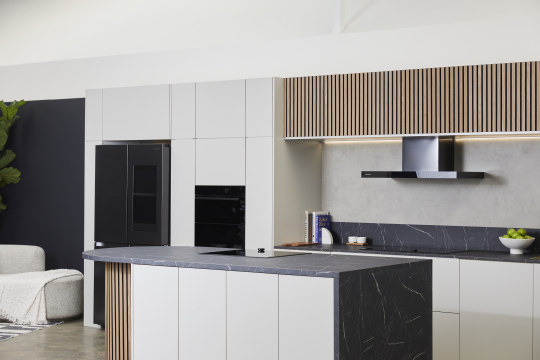
View On WordPress
#21.5-inch screen#advanced cooling#AI Cleaning Mode#AI Family Hub#AI Floor Detect#AI Pro Cooking#AI technology#AI Vision Inside#AI Wash#artificial intelligence#BESPOKE AI#connectivity#Consumer Electronics#digital inverter#Eco-Friendly#energy conservation#energy efficiency#entertainment hub#family hub#food inventory#food management#food waste reduction#French Door Refrigerator#future tech#home automation#home management#household appliances#innovative technology#intelligent refrigerator#IoT
0 notes
Text
What To Expect From A Comprehensive Bond Cleaning Service?
Moving out of a rental property can mix excitement and stress. On the one hand, you're gearing up for a new chapter; on the other, you're faced with the daunting task of ensuring your old place is spotless. That's where a comprehensive bond cleaning service becomes your best friend.
Imagine confidently handing over your keys, knowing you’ve met all the landlord’s expectations and are set to secure your bond refund. Here’s a closer look at what you can expect from a top-notch bond cleaning Melbourne service.
The Ultimate Checklist for a Smooth Move
When you hire a bond cleaning Melbourne service, you invest in a thorough and meticulous cleaning. This means that every inch of your property is covered. In the kitchen, for example, you can expect a deep clean that tackles everything from the oven and stovetop to the refrigerator and cabinets.
The sink will be sanitised and gleaming and ready for the next tenant. Moving to the bathroom, the cleaning service will ensure that the shower, bathtub, and toilet are scrubbed to perfection. Mirrors will be polished to a crystal-clear finish, and tiles and grout will be refreshed.
Professional Touch: Why Experience Matters
While DIY bond cleaning might seem tempting, hiring professionals is often the smarter choice. Experienced cleaners from a reputable bond cleaning Melbourne service know exactly what landlords look for. They bring the right tools, products, and expertise to handle every cleaning aspect efficiently and effectively.
Many services now offer eco-friendly cleaning options, using green products that are safe for your family and the environment. This is another reason to trust the professionals—they provide a deep clean while being mindful of environmental impact.

Flexibility and Customisation
Every property is different, and so are cleaning needs. Melbourne's comprehensive bond cleaning service understands this and offers customisable packages. Whether you need additional services like carpet steam cleaning or tidying up outdoor areas, they can tailor their offerings to meet your specific requirements.
Clear communication about your needs ensures that the service you receive is perfectly suited to your property.
The Importance of a Satisfaction Guarantee
One significant advantage of a reputable bond cleaning Melbourne service is its satisfaction guarantee. If the initial cleaning doesn’t meet your expectations, the company will return to address any issues at no extra charge. This guarantee provides peace of mind and ensures you get the most value out of your cleaning investment.
Final Thoughts: Leave It to the Experts!
Don’t let cleaning become an added stress in the whirlwind of moving. Hiring a comprehensive bond cleaning service saves time and ensures that your former home is left in impeccable condition.
With their focus on thorough cleaning, eco-friendly practices, and satisfaction guarantees, these professionals ensure your bond refund is well within reach.
So, as you prepare to embark on your next adventure, let the experts handle the cleaning. After all, your smooth transition into your new home starts with a sparkling clean old one!
Source From: What To Expect From A Comprehensive Bond Cleaning Service?
2 notes
·
View notes
Text
Eco-Friendly Interior Design: Sustainable Solutions for Your Home
As awareness of environmental issues grows, eco-friendly interior design is becoming increasingly popular. This approach not only enhances the aesthetic appeal of your home but also contributes to a more sustainable and healthier environment. Here’s how you can embrace sustainable solutions in your interior design:

1. Choose Sustainable Materials
Opt for materials that are eco-friendly and have a minimal environmental impact. Look for:
Bamboo: A rapidly renewable resource used for flooring, furniture, and decor.
Recycled Glass: Ideal for countertops and tiles, recycled glass reduces waste and adds a unique touch.
Reclaimed Wood: Salvaged from old buildings or furniture, reclaimed wood offers a rustic charm and helps reduce deforestation.
2. Opt for Low-VOC Paints
Volatile Organic Compounds (VOCs) in traditional paints can negatively impact indoor air quality. Choose low-VOC or no-VOC paints that are less harmful and contribute to a healthier living environment. Many eco-friendly paint options come in a wide range of colors and finishes, so you don’t have to compromise on style.
3. Incorporate Energy-Efficient Lighting
Energy-efficient lighting solutions not only reduce your energy bills but also minimize your environmental footprint. Consider:
LED Bulbs: They use up to 90% less energy than traditional incandescent bulbs and have a longer lifespan.
Smart Lighting Systems: These systems allow you to control lighting remotely and set schedules to minimize energy use.
4. Use Sustainable Fabrics
When selecting textiles for your home, choose fabrics that are both stylish and sustainable. Options include:
Organic Cotton: Grown without harmful chemicals, organic cotton is soft and eco-friendly.
Hemp: A durable and versatile fabric that requires minimal water and pesticides.
Recycled Polyester: Made from recycled plastic bottles, it helps reduce waste and can be used for upholstery and curtains.
5. Invest in Energy-Efficient Appliances
Modern appliances that are ENERGY STAR® rated use less energy and water, helping you reduce your household’s carbon footprint. Look for energy-efficient models for your refrigerator, dishwasher, washing machine, and other appliances.
6. Embrace Upcycling and Repurposing
Give old furniture and decor a new life through upcycling and repurposing. This approach reduces waste and adds unique character to your home. Consider:
Painting or Reupholstering Furniture: Transform outdated pieces into stylish, custom creations.
Repurposing Materials: Use reclaimed materials for DIY projects, such as creating a coffee table from an old door or shelves from wooden pallets.
7. Integrate Indoor Plants
Indoor plants not only enhance the aesthetic appeal of your home but also improve air quality by filtering pollutants. Opt for low-maintenance plants like snake plants, pothos, or peace lilies, which are known for their air-purifying properties.
8. Choose Sustainable Flooring Options
Eco-friendly flooring options can dramatically change the look and feel of your space. Consider:
Cork Flooring: Made from the bark of cork oak trees, it’s renewable and offers natural insulation.
Linoleum: Made from natural materials like linseed oil and wood flour, it’s biodegradable and comes in various colors and patterns.
Recycled Carpet: Made from recycled materials, such as plastic bottles, it provides comfort while reducing waste.
9. Implement Water-Saving Fixtures
Conserving water is an essential aspect of eco-friendly design. Install:
Low-Flow Faucets and Showerheads: These fixtures reduce water usage without sacrificing performance.
Dual-Flush Toilets: Offer two flushing options to minimize water consumption.
10. Support Local and Artisan Products
Choose locally-made and artisan products to reduce transportation emissions and support local economies. Local artisans often use sustainable practices and materials, adding a unique touch to your home while minimizing your environmental impact.
By integrating these eco-friendly interior design solutions, you can create a home that reflects your commitment to sustainability while enjoying a stylish and comfortable living space. Embracing these practices not only benefits the environment but also promotes a healthier lifestyle for you and your family.
2 notes
·
View notes
Text

Home Cleaning: A Comprehensive Guide to a Sparkling Home
Why a Clean Home Matters
Health Benefits of a Clean Living Space
A clean home means fewer germs and allergens, which can lead to better health. Regular cleaning helps prevent the spread of illnesses and reduces allergy symptoms by eliminating dust, pet dander, and other irritants.
Understanding the Basics of Home Cleaning
The Essentials of Home Cleaning
Cleaning Supplies You Need
To get started with home cleaning, you’ll need some basic supplies: a broom, mop, vacuum cleaner, microfiber cloths, sponges, a bucket, and gloves. These tools will help you tackle various cleaning tasks effectively.
Cleaning Products and Their Uses
Different surfaces require different cleaning products. For instance, use glass cleaner for windows and mirrors, all-purpose cleaner for countertops, and a disinfectant for bathrooms. Always read the labels to ensure you’re using the right product for the job.
Creating a Cleaning Schedule
Daily Cleaning Tasks
Daily tasks include making the bed, doing the dishes, wiping down countertops, and tidying up common areas. These small chores can prevent messes from piling up.
Weekly Cleaning Tasks
Weekly cleaning involves more detailed tasks like vacuuming carpets, mopping floors, dusting surfaces, and cleaning the bathroom. Setting aside a specific day each week for these chores can help maintain a clean home.
Monthly Cleaning Tasks
Monthly tasks include deep-cleaning appliances, washing windows, and organizing closets. These less frequent tasks ensure your home remains spotless throughout the year.
Room-by-Room Cleaning Guide
Kitchen Cleaning
Cleaning the Countertops and Sink
Start by clearing off the countertops and wiping them down with an all-purpose cleaner. Scrub the sink with a mild abrasive cleaner to remove stains and keep it shiny.
Maintaining Appliances
Regularly clean your appliances to keep them running efficiently. Wipe down the exterior of your refrigerator, microwave, and stove. Don’t forget to clean the inside of your microwave and oven periodically.
Bathroom Cleaning
Scrubbing the Shower and Tub
Use a bathroom cleaner to scrub the shower walls, doors, and tub. Pay special attention to grout lines and corners where mold and mildew can accumulate.
Keeping the Toilet Sparkling
Clean the toilet bowl with a toilet cleaner and a brush. Wipe down the exterior with a disinfectant to kill germs and keep it looking clean.
Living Room Cleaning
Dusting and Vacuuming
Dust all surfaces, including shelves, tables, and electronics. Vacuum carpets and rugs to remove dirt and dust. If you have hardwood floors, sweep and mop them.
Cleaning Upholstery
Vacuum upholstered furniture to remove dust and crumbs. For stains, use an upholstery cleaner suitable for the fabric type.
Bedroom Cleaning
Making the Bed
Make your bed every morning to give your bedroom an instant tidy look. Change your bed linens weekly to keep them fresh.
Organizing the Closet
Take some time each month to declutter and organize your closet. Donate or discard items you no longer need to keep your space organized.
Deep Cleaning Tips
Seasonal Deep Cleaning
Spring Cleaning Tips
Spring is the perfect time for a thorough cleaning. Open the windows to air out your home, wash curtains, clean light fixtures, and deep clean carpets.
Fall Cleaning Tips
Prepare for the colder months with a fall deep clean. Clean out gutters, wash windows, and organize storage areas to make space for winter items.
Tackling Stubborn Stains
Carpet Stains
Blot spills immediately with a clean cloth. Use a carpet cleaner to treat stains. For tough stains, consider renting a carpet cleaning machine or hiring a professional.
Upholstery Stains
Test any cleaning solution on a hidden area first. Blot the stain with a clean cloth and apply an upholstery cleaner. Gently scrub with a soft brush and let it dry completely.
Green Cleaning Alternatives
Eco-Friendly Cleaning Products
Homemade Cleaning Solutions
You can make effective cleaning solutions with common household items like vinegar, baking soda, and lemon juice. These ingredients are natural and safe for the environment.
Benefits of Green Cleaning
Green cleaning products reduce your exposure to harmful chemicals and are better for the environment. They are also often more cost-effective than commercial cleaners.
Maintaining a Clean Home
Habits for Keeping Your Home Clean
Develop daily habits like putting things away immediately, wiping down surfaces, and doing a quick evening tidy-up to keep your home consistently clean.
Benefits of a Clean and Organized Home
A clean home reduces stress, improves health, and creates a pleasant living environment. Keeping your space tidy and organized can enhance your overall well-being.
FAQs
How often should I clean my home?
It depends on your lifestyle and household size, but daily tidying, weekly cleaning, and monthly deep cleaning are good practices.
What are the best products for green cleaning?
Vinegar, baking soda, and lemon juice are excellent for most cleaning tasks. You can also find eco-friendly commercial products that are safe and effective.
How can I remove tough stains from my carpet?
Blot the stain immediately and use a carpet cleaner. For persistent stains, consider professional cleaning services.
Is it necessary to deep clean my home every season?
Yes, seasonal deep cleaning helps maintain a healthy and pleasant living environment by tackling areas that regular cleaning might miss.
What are some quick cleaning tips for busy people?
Focus on high-traffic areas, keep cleaning supplies handy, and do small tasks daily to prevent messes from accumulating.
2 notes
·
View notes